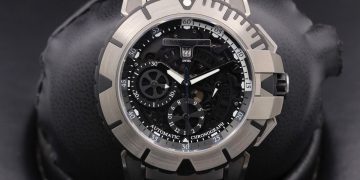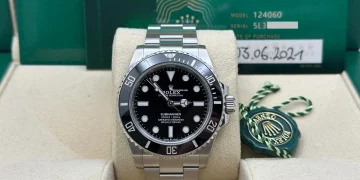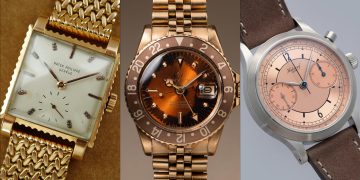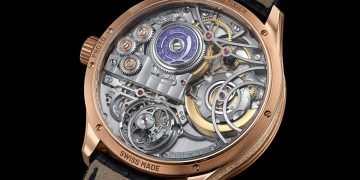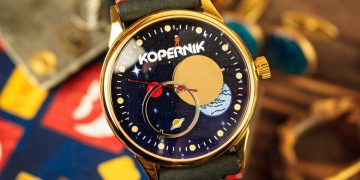Introduction:
In the luxury watch industry, a brand’s history is often as significant as its current offerings. The narratives surrounding a brand’s founding, milestones, technological innovations, and associations with famous personalities or events contribute significantly to its reputation and prestige. Iconic watchmakers like Rolex, Patek Philippe, Omega, and Audemars Piguet have built their global reputations over decades, if not centuries, by weaving history into the very fabric of their identity.
The global market for luxury watches is highly competitive, and in such an environment, a brand’s heritage can serve as a powerful tool for differentiating itself from others. In this article, we will explore how the history of renowned watch brands has contributed to their market reputation, helped establish them as symbols of prestige, and shaped their global success.
1. The Role of History in Building a Brand’s Identity
1.1 Heritage as a Foundation of Trust
The history of a watch brand often serves as the foundation for consumer trust. When consumers purchase a luxury watch, they are not merely buying a timepiece—they are investing in a legacy of craftsmanship, quality, and reliability. A brand with a rich history provides reassurance that its products have stood the test of time, both in terms of durability and design.
- Swiss Watchmaking Tradition: The Swiss watchmaking industry has been at the heart of luxury watch history for centuries. Brands like Patek Philippe, Audemars Piguet, and Jaeger-LeCoultre are synonymous with the Swiss tradition of horology, which is known for its unparalleled craftsmanship, precision, and dedication to mechanical innovation. The Swiss watch industry’s storied past has played a pivotal role in shaping the global perception of quality in watchmaking.
- Innovation and Milestones: The historical innovations of these brands, such as the tourbillon complication by Breguet, the introduction of the chronograph by Omega, and Rolex’s development of the Oyster case and the Perpetual movement, have become important milestones in the history of horology. These innovations not only helped shape the watch industry but also solidified the brands’ reputations as pioneers in their field.
1.2 Legacy as a Symbol of Exclusivity
A rich brand history also adds to the exclusivity of a luxury watch brand. Owning a timepiece from a brand with a long history evokes a sense of being part of something rare and prestigious. The stories of iconic watches passed down through generations, worn by historical figures, or tied to significant events, add an aura of luxury and privilege to the ownership experience.
- Rolex’s Status Symbol: Rolex is perhaps the most prominent example of a watch brand whose history is intertwined with its global reputation. Founded in 1905, Rolex’s association with exploration, adventure, and success—through partnerships with renowned explorers, athletes, and celebrities—has reinforced its status as a symbol of achievement. The Rolex Submariner, for instance, became famous as the watch worn by James Bond, further cementing the brand’s global prestige.
- Omega and Space Exploration: Similarly, Omega has carved out its reputation by tying its history to space exploration. The Omega Speedmaster was worn during the Apollo 11 mission, when Neil Armstrong became the first man to walk on the moon in 1969. This momentous connection has made Omega synonymous with precision and exploration, adding an element of adventure and scientific achievement to its brand image.
2. How History Shapes Brand Perception in the Global Market
2.1 The Influence of Iconic Watches
A brand’s historical stories often become embodied in iconic watches, and these timepieces help define a brand’s reputation worldwide. For example, certain models are so closely tied to a brand’s identity that their history becomes a major factor in driving global demand.
- Patek Philippe Calatrava: The Calatrava, first introduced in 1932, is one of Patek Philippe’s most iconic models, epitomizing the brand’s philosophy of timeless design and exceptional craftsmanship. Its minimalist aesthetic, coupled with the brand’s century-long commitment to producing some of the finest mechanical watches in the world, has elevated the Calatrava into a symbol of luxury. The Patek Philippe Nautilus, introduced in 1976, also helped shape the brand’s image as a producer of luxury sports watches with a distinctive design.
- Audemars Piguet Royal Oak: The Royal Oak has been a game-changer in the luxury watch industry since its introduction in 1972. Its innovative design, spearheaded by Gerald Genta, combined a stainless steel case with a refined, luxurious appearance, challenging traditional notions of what a luxury watch should be. The Royal Oak’s rich history as a trailblazer in the evolution of luxury sports watches continues to bolster the reputation of Audemars Piguet in the global market.
2.2 Building a Narrative Around Heritage
In addition to the timepieces themselves, the narratives around a brand’s history help create a strong emotional connection with consumers. Watch brands use their heritage not only in their designs but also in their marketing, communicating to consumers that buying one of their timepieces is not just about acquiring a product but also about becoming part of a storied legacy.
- Vacheron Constantin’s Legacy: Founded in 1755, Vacheron Constantin is the world’s oldest continuously operating watch manufacturer. The brand’s rich history, which includes crafting watches for royalty and notable figures, adds immense value to the brand’s reputation in the global market. Vacheron’s reputation as a pioneer in fine watchmaking is deeply intertwined with its historical narrative, and the brand’s heritage collections reflect that tradition while offering modern innovations.
- Jaeger-LeCoultre and Cinematic Legacy: Jaeger-LeCoultre has successfully used its historical ties to cinema to enhance its global reputation. The brand’s Reverso model, which was created in the 1930s for polo players, became a symbol of both elegance and practicality. The Reverso has appeared in countless films and is considered a classic among collectors, which further strengthens the brand’s global perception as a luxury watchmaker with both historical significance and a contemporary edge.

3. The Impact of History on Consumer Loyalty and Brand Trust
3.1 The Legacy of Excellence
A brand’s history shapes not only its reputation but also its consumer loyalty. When consumers purchase from a brand with a well-established legacy, they are not just investing in the watch—they are investing in a promise of excellence. The brand’s history of producing quality timepieces creates an implicit guarantee of continuity and trust in its future offerings.
- Patek Philippe’s “Generational” Approach: Patek Philippe has long marketed itself as a brand that produces watches intended to be passed down through generations. This message resonates deeply with consumers who appreciate the brand’s historical commitment to producing high-quality, timeless pieces. Patek’s heritage adds an element of longevity to its watches, encouraging buyers to view them as more than just luxury accessories but as family heirlooms.
3.2 The Global Perception of Luxury
In a global market where luxury is often associated with exclusivity, a watch brand’s heritage plays a key role in shaping its perceived value. Brands with a rich history are often seen as symbols of prestige and superiority. Their long-standing reputation for producing exceptional timepieces creates a sense of confidence in the consumer, who feels assured that they are purchasing something of lasting value.
- Rolex’s Global Appeal: Rolex, with its long history, has become a universal symbol of success and luxury. Its global reputation for durability, accuracy, and style has made it a favorite among consumers worldwide. This widespread recognition has helped Rolex maintain its position as one of the most coveted and respected watch brands, making it a highly desirable brand for both new buyers and seasoned collectors.
4. Conclusion:
The history of watch brands plays a crucial role in shaping their reputation in the global market. The heritage, milestones, and innovations associated with these brands are more than just backstories—they are central to the identity and perception of the brand. A watch brand’s history enhances its prestige, fosters consumer loyalty, and provides a foundation for building trust in its products.
From Rolex’s exploration ties to Omega’s space legacy, the stories behind these iconic brands resonate deeply with consumers, adding layers of meaning and value to each timepiece. As consumers increasingly seek not just a product, but a connection to a brand’s legacy, the historical narratives of luxury watch brands will continue to play a pivotal role in defining their global reputation.



